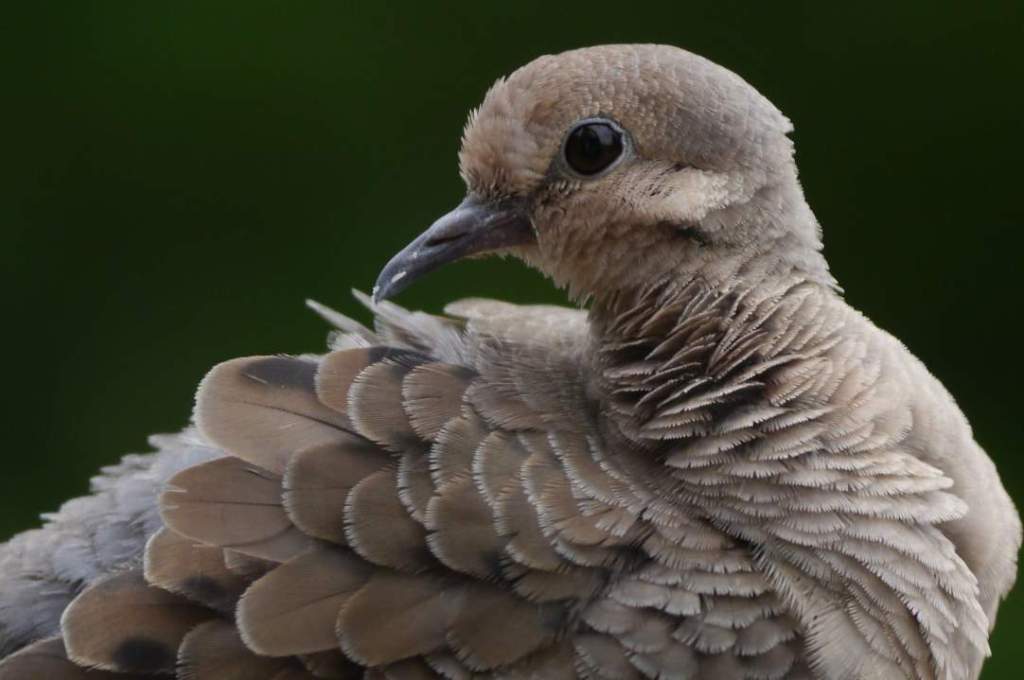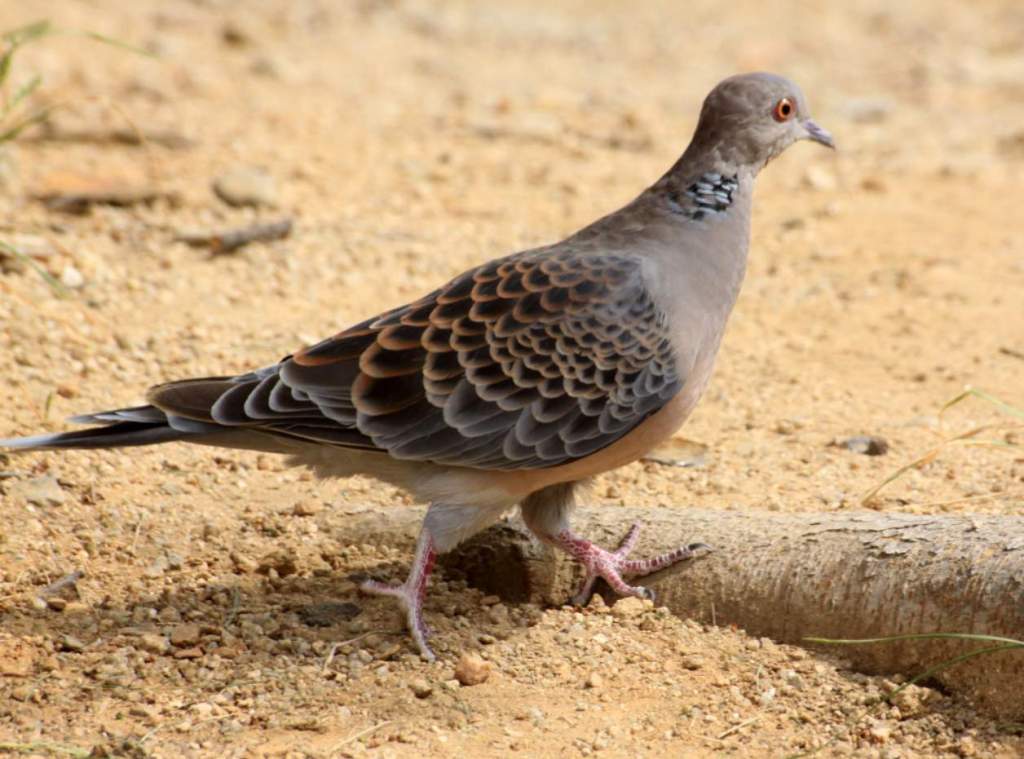Pigeons and doves are sweet pets, messengers and symbol of peace. Two billion pigeons in one flock is quite a bird story, but it’s true. A century ago, such a sight was common throughout North America. The wild passenger pigeon (or wood pigeon) was often seen in flocks 200 miles long and nesting in enormous numbers. Over a 150,000-acre forest tract, 50 to 100 nests could be counted in one tree.
The noise of these flocks could be heard for three miles, and thick branches often broke with the weight of the roosting birds. Now, however, there is no living passenger pigeon specimen anywhere in the world. A prize of $81,000 offered for a pair of living birds of this species remained unclaimed for years. The last captive passenger pigeon died in Cincinnati’s zoological garden in 1914.

The passenger pigeon was about 17 inches from tip to tail, with a bluish-gray color above and a reddish color below. Because of this under color, it was frequently called the red-breasted pigeon. Its wings and tail were long and pointed, giving it a neat, tailored appearance. It consumed fruits, seeds, grains, and nuts. The complete disappearance of the passenger pigeon is easily understood. It was exposed to reckless slaughter as the country became more densely settled in the 19th century. Firearms could do in one generation what the bow and arrow left undone.
One shot from a modern shotgun fired into a pigeon tree would kill enough pigeons to fill a game bag. Yet, not content with this wholesale killing, flowers set up large nets, which sometimes took 200 to 50 birds in one haul. The young, just out of the nest, nailed squabs were especially marketable, for they were tender and tasty. Expert pigeons followed the flocks from their roosting place, tracing their whereabouts by telegraph and overtaking them by railroad. The last recorded occurrence of nesting and slaughter in the United States occurred in Petoskey, Mich., in 1878.
It is said that from this nesting place, tons of ice were sent to the New York market. It took 15 tons of ice to pack the squabs alone. For 25 years after this raid, diminishing flocks were occasionally seen in various parts of the United States. They were relentlessly pursued until their extermination.
The pigeon family has an ancient history. The names “pigeon” and “dove” are used interchangeably. The former comes from French and Italian (from Latin pipio), while the name “dove” is akin to Dutch duif. Moreover, commonly, but not always, the smaller members of the group are called “doves” and the larger ones “pigeons!”
As city pigeons fly, they watch for friends who feed on them. On the left, a pigeon guards and warms the eggs in its nest while its mate searches for food. The famous dove of Hazrat Noah’s (A.S.) Ark belonged to this family. Early Hebrews highly regarded the bird, for their poor could sacrifice doves instead of costly lambs.
The American turtle dove is similar to the European species and is also known as the mourning dove. It is well-known in most parts of the United States. Its soft gray plumage with a collar of changing amber lights, its sad and sweet cooing call, and its quiet friendly habits endear it to all.
More than 600 wild species of pigeons and doves are known throughout the world. They are most numerous in the Eastern Hemisphere. Birds vary greatly in their habits. Some build in trees, others on the ground; some nest in isolated pans, others in colonies. In drinking, they do not lift their heads as most other birds do but take the water in long drafts. Pairs mate for life. Both parents incubate the eggs, which is usually number two.
They nourish the helpless young with partly digested food mixed with crop secretions. This food is called “pigeon milk.” About 12 species occur in North America. Pigeons were tamed early, and domestic pigeons are now common worldwide. Three thousand years before, Egyptians raised pigeons for food, and probably used them to carry messages
The 150 or more named varieties of domestic pigeons, despite their vast differences, have all been traced to the common ancestry of the wild rock dove of Europe and North Africa. This fact was made known by the great scientist, Darwin. In developing his theory of “natural selection,” he found the pigeon to be one of his most plastic subjects for experimentation.

He discovered that triple crosses between distinct varieties, no matter what color, were likely to produce, in the third generation, a color pattern precisely like that of the wild rock dove, which wears a grayish-blue plumage with white on the lower back and two black bars on the wings. Domestic pigeons are divided into four principal groups. The pouters are a very distinct race, having an esophagus and a crop that can be enormously inflated.
A second group—having large feet, a long beak, and rough-wattled skin eyes-includes carriers, dragons, runts, and barbs. Another group, with short beaks and naked skin about the eyes, includes fantails, turbits, tumblers, and frill-backs. Finally, there are those that more closely resemble the rock dove — trumpeters, laughers, nuns, spots, and swallows. Next to the pouter, the fantail differs most from its original family, for it has from 36 to 46 quills in the tail, whereas the common rock dove has only 12.
A carrier is a decorative pigeon raised mainly for show purposes. Pigeons bred and trained for racing or carrying messages are termed homing pigeons. They possess a remarkable sense of direction and can be trusted to return several hundred miles to their home lofts. Caesar used pigeons as messengers during his Gallic wars.
The Saracens had a well-established pigeon postal service during the Crusades. Clubs in America, and even more in Belgium, keep thousands of “homers” for pigeon racing. A speed of 60 miles an hour over 75 miles is not uncommon; 40 miles an hour is considered a reasonable speed over 125 miles or more.
During the First World War, when telephone and radio communication was impossible, these feathered messengers won world praise and admiration. All the armies used them. At one point 12 miles behind the French lines, the British kept 60 pigeons housed on a London motorbike. The outside had been roofed to form their cage, while the attendants, consisting of a chauffeur, trainer, and orderly, slept inside. A perch was cleverly arranged before the front opening so that when the birds alighted on returning from their flight, an electric bell aroused the men inside, day or night.
The pigeons were taken out to the trenches in baskets to serve as needed. To keep them in practice, they were released anyway if they weren’t used within 24 hours. Birds were always sent in pairs with the same message so that if one was hailed.
There would still be a chance of the message arriving safely. An American pigeon, Cher-Ami, helped the famous Lost Battalion of the 77th Division. Although seriously wounded when flying over the enemy firing line, he never wavered in his flight. When he died, his body was mounted and placed in the National Museum in Washington, D.C.
Moreover, in the Second World War, military planes carried pigeons to summon help in case of crashes. The United States Army Signal Corps maintains a pigeon breeding and training center at Fort Monmouth, N. J., and has active pigeon lofts at a number of other posts. In peace-time, these birds are widely used by the air service to establish communication in case of forced landings, especially in regions such as the Canal Zone, and the Hawaiian and Philippine Islands.
Even the most talented of homers do not fly after dark. However, the army is successfully developing an army race of night-flying homing pigeons that are vastly more useful as messengers in peace or war.
Pigeon raising is common in Europe and America. Squabs, or young birds, bring high prices in all markets. Pigeon nature demands sociability, and boys and girls who own a pair of pet pigeons often find that the birds will desert their private apartment for the crowded loft of a neighbor. Aside from providing salt and water for bathing, pigeons are cared for like other feathered pets.
Pigeons and doves belong to the family Columbidae. The scientific name of the passenger pigeon, Ectopistes migratorius; of a mourning dove, Zenaidura macroura; of the rock dove, Columba livia.
Read More – Wonga Pigeon (Leucosarcia rnelanoleuca)







